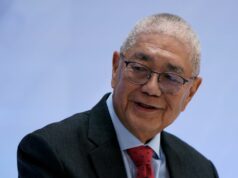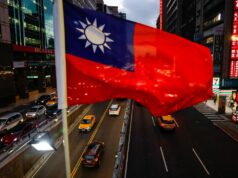New law re-focuses functions of the National Museum
REPUBLIC ACT (RA) 11333, or the National Museum of the Philippines Act, takes effect today. The Act clarifies the role of the National Museum.
On July 16, Malacañang released a copy of the new law which aims for the State “to pursue and support the cultural development of Filipino people, through the preservation, enrichment and dynamic evolution of Filipino national culture.”
“The RA is the fruit of our experience over the last years in running the museum under the old charter RA 8492,” National Museum director Jeremy Barns told BusinessWorld on July 25 at the National Museum of Natural History, at the sidelines of the general assembly of the Museum Foundation of the Philippines, Inc. “Over the years, we have identified strengths, weaknesses, and gaps… all of those learnings we tried to put into this law,” he said.
The law was passed with the help of representatives from Senate and Congress who are members of the Board of Trustees of the National Museum.
“We did a workshop four years ago and then, at the start of the 17th Congress on July 2016, we were ready with a draft bill,” Mr. Barns said.
The Act — a consolidation of Senate Bill No. 1529 and House Bill No. 8795 — was passed in the Senate and House of Representatives in February this year, and President Rodrigo Roa Duterte signed it into law in April.
CLARIFICATION OF FUNCTIONS
Under RA 11333, among the National Museum’s duties are to focus on developing the National Museum Complex, reaching out to the regions outside the NCR, among others. Several of its regulatory functions have been transferred to the National Commission for Culture and the Arts (NCCA).
Sec. 9 on the Master Plan of the National Museum Complex reads: “The National Museum shall develop the National Museum Complex within and adjacent to Rizal Park and other identified areas with reference to the Burnham Plan for Manila of 1905” which shall include venues for public exhibitions and “integrative infrastructure for its constituent buildings.” According to Mr. Barns, the masterplan is a roadmap to enhance [the National Museum Complex] further and integrate its activities.
Sec. 11 focuses on regional, area, and site museum and satellite offices. As the cultural agency with the largest regional presence, the National Museum currently has 14 existing regional museums nationwide — in Batanes, Ilocos, Cagayan Valley, Cordillera, Bicol, Rizal, Marinduque, Romblon, Iloilo, Dumaguete, Bohol, Butuan, Zamboanga, and Jolo.
“This is in line with the move to bring services to the regions. We want our regional museums to be the premiere cultural center of those places for the benefit of the people there. We want to be located near educational centers and tourism gateways,” Mr. Barns said.
A regional museum in Cebu is currently under development and targeted for completion in 2021 in line with the province’s 500th founding anniversary.
Afterwards, the National Museum hopes to extend operations in Eastern Samar.
NCCA’S ROLE
Sec. 30 states that the following regulatory functions: RA 4846 Cultural Properties Preservation and Protection Act (including PD 260 and PD 374); PD 1109 which declares the archeological areas in Cagayan Valley and Kalinga-Apayao archeological reservations; RA 8492 or National Museum Act of 1998; RA 9105 or Art Forgery Act of 2001; RA10066 National Heritage Act — are to be transferred to the NCCA.
According to Mr. Barns, the transfer of these regulatory issuances to the NCCA are meant to “remove conflicts of interest” and “allow the institution to focus on museum work.”
“We are collaborating directly with the [NCCA’s] office of the chair who is also a member of the board of trustees,” he said.
“We see our main job and core function is to promote museum development in the Philippines. But we are still obliged to provide all technical assistance and support to the NCCA in carrying out those functions. It’s just that the decisions and issuances won’t come from the National Museum,” Mr. Barns added.
NCCA Chairperson and National Artist for Literature Virgilio S. Almario affirmed that he is aware of the transfer of regulatory functions.
“We have to plan it well because we are also moving towards the organization of the Department of Culture,” Mr. Almario told BusinessWorld after the NCCA Buwan ng Wika kickoff on July 29 at the Liwasang Bonifacio in Manila City.
“If the Department of Culture materializes, all its [NCCA’s] functions will be transferred to that department,” Mr. Almario added.
The effectivity of the National Museum of the Philippines Act (RA 11333) repeals RA 8492 or the National Museum Act of 1998. — Michelle Anne P. Soliman



